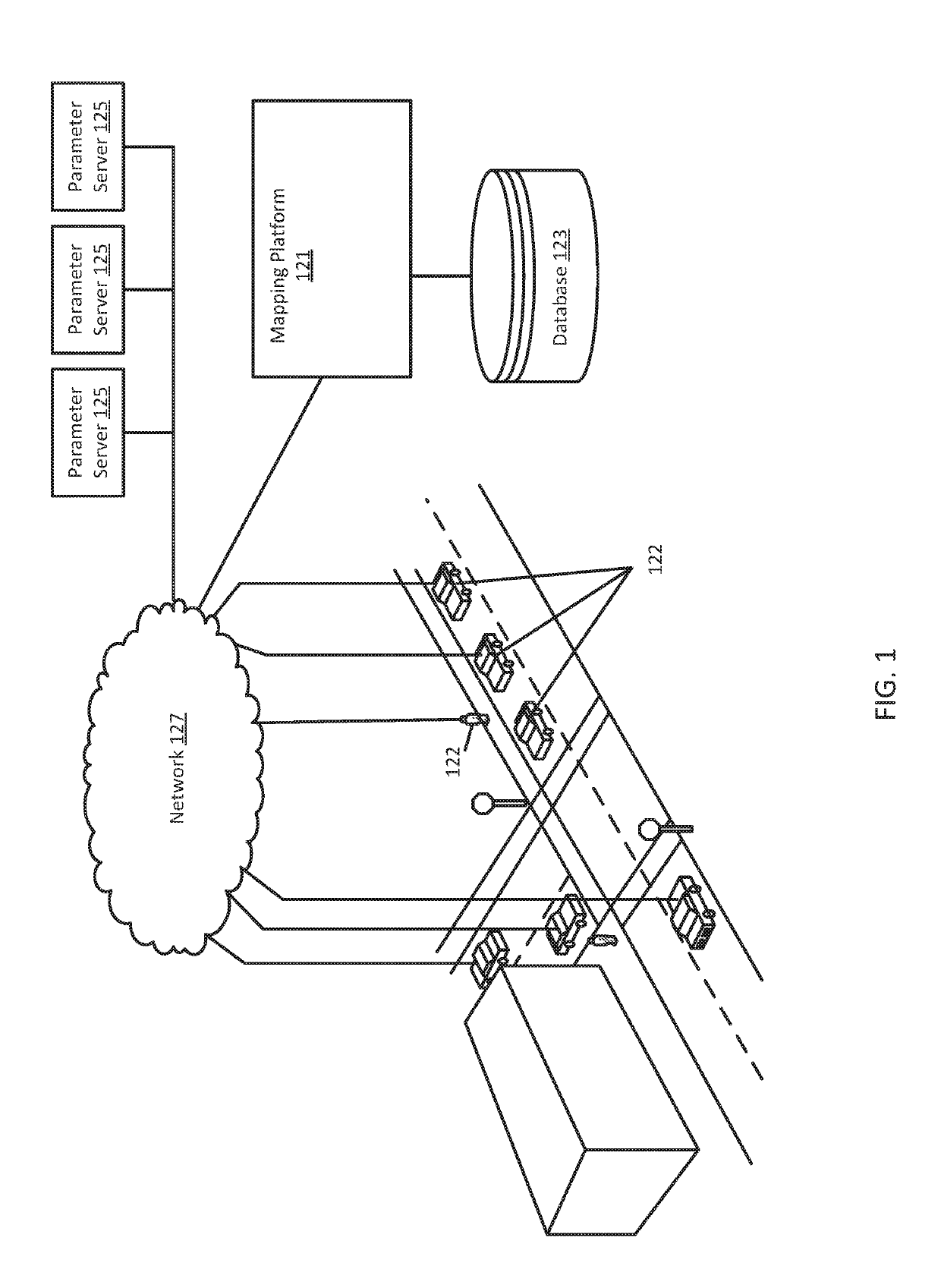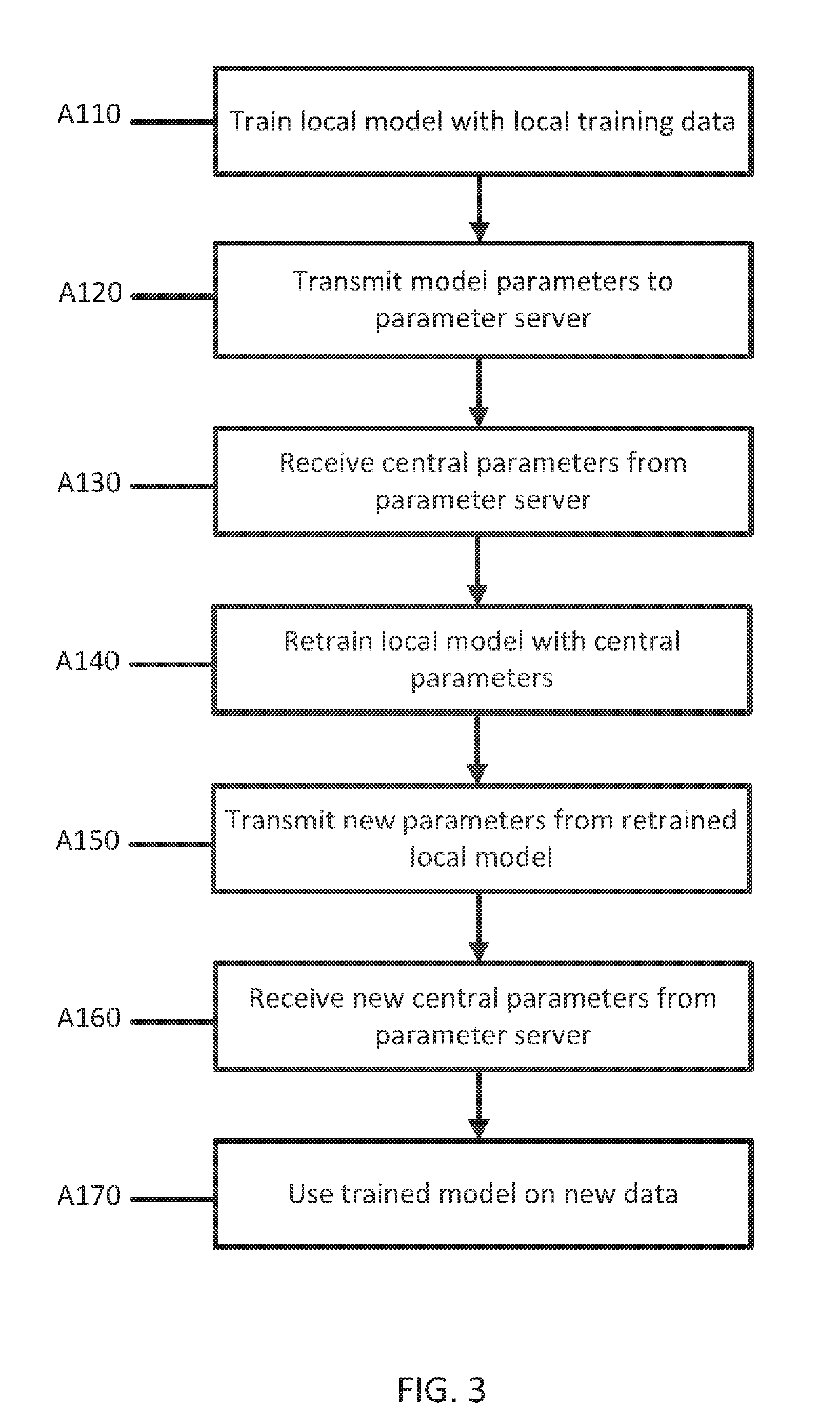Asynchronous parameter aggregation for machine learning
a machine learning and parameter aggregation technology, applied in the field of location, navigation, and/or mapping services, can solve the problems of large amount of data, data from being shared between devices, and requiring model training, e.g. machine learning networks, to achieve the effect of reducing the number of data
- Summary
- Abstract
- Description
- Claims
- Application Information
AI Technical Summary
Benefits of technology
Problems solved by technology
Method used
Image
Examples
embodiment 1
[0127]The following embodiments are disclosed. A navigation device for training a machine learned model, the device comprising at least one sensor configured to acquire training data; a communication interface configured to communicate with a parameter server; and a device processor configured to train the machine learned model using the training data; the device processor further configured to transmit a parameter vector of the trained model to the parameter server and receive in response, an updated central parameter vector from the parameter server; the device processor further configured to retrain the model using the updated central parameter vector; wherein the navigation device acquires different training data from other devices that are training the model; wherein at least one transmission between the navigation device and the parameter server occur asynchronously with respect to the other devices that are training the model.
[0128]Embodiment 2: the navigation device of embo...
embodiment 9
[0135] the navigation device of embodiment 1, wherein the parameter vector comprises a randomly selected subset of parameters of the trained model.
[0136]Embodiment 10: the navigation device of embodiment 1, wherein the training data is labeled, and the machine learned model is trained using a supervised training process.
[0137]Embodiment 11: the navigation device of embodiment 1, wherein the updated central parameter is transmitted to the device prior to the updated central parameter being altered again.
embodiment 12
[0138] a method for training a machine learned model using a plurality of distributed worker devices, the method comprising: training, by a worker device, a machine learned model using local training data and a set of first parameters; transmitting, by the worker device, a set of second parameters of the trained machine learned model to a parameter server; receiving, by the worker device, a set of third parameters from the parameter server, wherein the set of third parameters is calculated at least partially as a function of the set of second parameters; and training, by the worker device the machine learned model using the local training data and the set of third parameters.
[0139]Embodiment 13: the method of embodiment 12, further comprising: transmitting, by the work device, a set of fourth parameters of the trained machine learned model to the parameter server.
PUM
 Login to View More
Login to View More Abstract
Description
Claims
Application Information
 Login to View More
Login to View More - R&D
- Intellectual Property
- Life Sciences
- Materials
- Tech Scout
- Unparalleled Data Quality
- Higher Quality Content
- 60% Fewer Hallucinations
Browse by: Latest US Patents, China's latest patents, Technical Efficacy Thesaurus, Application Domain, Technology Topic, Popular Technical Reports.
© 2025 PatSnap. All rights reserved.Legal|Privacy policy|Modern Slavery Act Transparency Statement|Sitemap|About US| Contact US: help@patsnap.com



